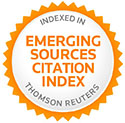Fenómenos del contacto lingüístico observados en quechua-hablantes en Patagonia
Palabras clave:
Quechua, Bilingüismo, contacto lingüístico, transferencias, cambio de código
Resumen
Resumen En este trabajo se consideran las transferencias originadas por el contacto lingüístico español-quechua en vernáculohablantes residentes en Chubut, especialmente en el área del golfo San Jorge. Se analiza las ocurrencias de préstamos permanentes, o sea adaptados al sistema quechua, los préstamos momentáneos y las instancias de cambio de código. En estos tres fenómenos se ve las estrategias que el vernáculohablante utiliza en su praxis discursiva. Se identifica qué clases de palabras son las más frecuentes como préstamos, la alternancia entre transferencia y lexema vernáculo. Se observan rasgos en el cambio de código. Se concluye que la competencia del hablante en el vernáculo posibilita estos fenómenos, que de ningún modo resultan agramaticales.Descargas
La descarga de datos todavía no está disponible.
Publicado
2020-12-03
Cómo citar
Díaz-Fernández Aráoz, A. D., & Quevedo, M. I. (2020). Fenómenos del contacto lingüístico observados en quechua-hablantes en Patagonia. Signo Y seña, (36), 4-22. https://doi.org/10.34096/sys.n36.7004
Número
Sección
Dossier. Morfología y sintaxis de lenguas indígenas americanas
- Los autores/as conservan los derechos de autor y ceden a la revista el derecho de la primera publicación, con el trabajo registrado con la Licencia Creative Commons Atribución-CompartirIgual 4.0 Internacional, que permite a terceros utilizar lo publicado siempre que mencionen la autoría del trabajo y a la primera publicación en esta revista.
- Los autores/as pueden realizar otros acuerdos contractuales independientes y adicionales para la distribución no exclusiva de la versión del artículo publicado en esta revista (p. ej., incluirlo en un repositorio institucional o publicarlo en un libro) siempre que indiquen claramente que el trabajo se publicó por primera vez en esta revista.
- Se permite y recomienda a los autores/as a publicar su trabajo en Internet (por ejemplo en páginas institucionales o personales).

















